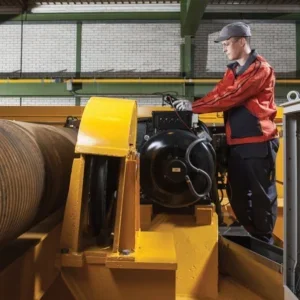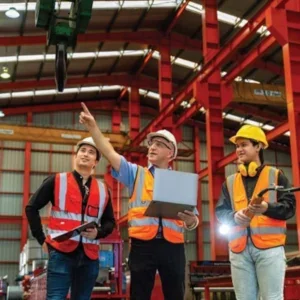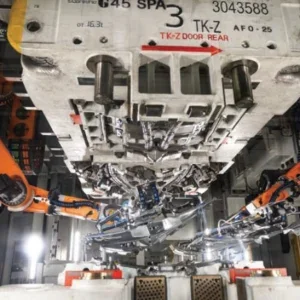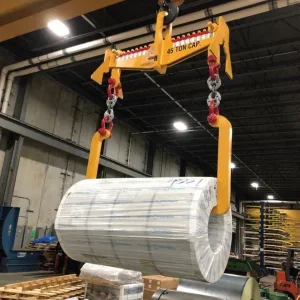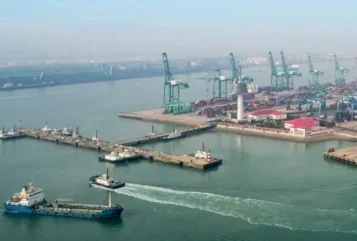
Situated 15km from Lima, the Port of Callao is not just Peru’s largest port but the largest on the South American Pacific coast. The Multipurpose North Terminal (MNT) is a dynamic maritime facility with a capacity of 1,050,000 TEUs and 12,000,000 metric tons of general cargo, handling a spectrum of cargo types, from containers to liquids.
Xavier Pascual, global director of Consultancy Services & New Technologies, Sener, worked with the port developing and implementing a Digital Twin for the MNT including on-site techniques employed for data gathering on-site, construction of a LOD500 3D model. Diverse tools integrated into the Digital Twin for seamless operation and maintenance and real-world simulations.
The collaborative efforts between Sener and the Port Authority have resulted in a groundbreaking Digital Twin, based on BIM methodology at LOD 500, covering the entirety of the MNT, focusing on maintenance and operation.
“My vision is to integrate our local digital twin with the development of Asset Digitization promoted by the company globally and with the recently implemented automated systems, so as to have a robust tool that helps us manage Big Data and transform it into information that helps us make decisions to optimize the operation of the multipurpose terminal and ensure constant improvement. When we invited Sener to be part of this vision, we found a highly competent partner that integrated information that, until then, had been scattered, into a reliable digital twin. The applications will be available soon and will be useful for us in the short term to redesign the terminal,” said Leonardo Tello del Pino, project implementation manager, APMT Callao.
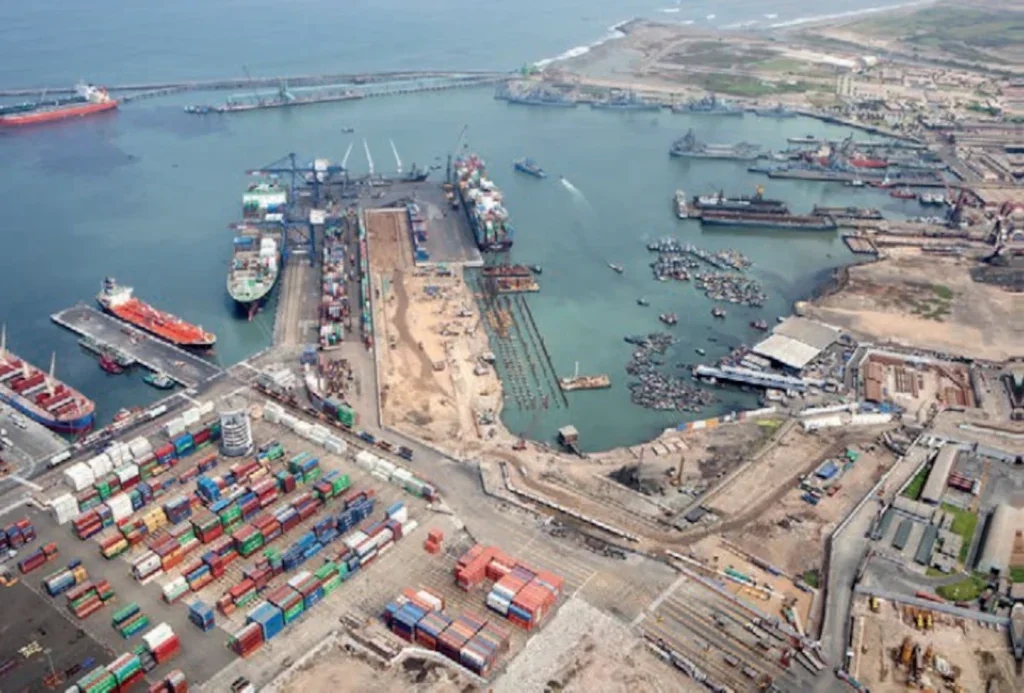
Since then the port operated by APM Terminals has announced 780 vessels called at Callao’s Multipurpose North Terminal since the beginning of this year, an indication the terminal’s efficiency and increased capacity is meeting demand. The 15% increase in calls to the terminal compared to the same period last year reaffirms the role of the largest port in Peru in facilitating international trade.
Thanks to its commitment to continuous improvement, APM Terminals Callao has increased its containerized cargo operation speed by 11%, while maintaining high quality and safety standards. This allows shipping lines to gain sailing time, supporting cost reductions in the entire logistics chain.
“APM Terminals Callao remains committed to efficiency and to the development of the Callao Multipurpose North Terminal. We will continue to implement technological and operational improvements to further reduce unloading times and increase our capacity to handle higher cargo volumes. This in line with the progress we have made in stage 3A of the Multipurpose North Terminal Modernization Project launched last year. Our goal is to continue to be a leading port in the region, providing high quality services to our customers,” said Fernando Fauche, commercial director, APM Terminals Callao.
Vessels calling at APM Terminals Callao North Terminal carry a wide variety of cargoes, reflecting the terminal’s versatility and capacity to handle different types of goods. These include solid bulk such as wheat and corn, breakbulk construction materials such as steel and cement, automotive products such as cars and heavy machinery, as well as sensitive cargo such as refrigerated cargo. The ability to handle this diversity of cargoes highlights the efficiency and adaptability of APM Terminals Callao’s operations to meet the diverse needs of the market.
During the first half of the year, APM Terminals Callao saw a significant increase in the volume of wheat and corn imports, up by approximately 15%, while steel coil imports increased by close to 20%.
Parts of the automotive sector – including heavy machinery – have registered an increase of around 30% compared to the same period last year.
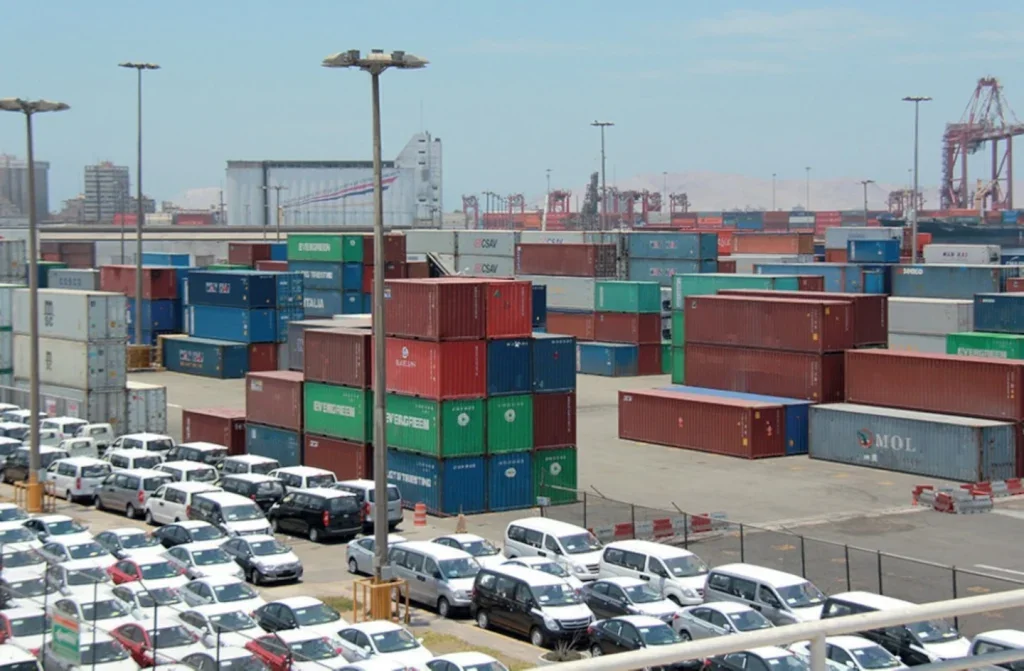
At the same time, as agricultural exports grow, APM Terminals Callao is ideally equipped – with electrical outlets and specialised services – to handle growing seasonal exports of refrigerated goods. All this supports and strengthens the North Pier of the Port of Callao as a strategic hub of agro-export at the national level.
“We will continue lifting standards of efficiency to remain the key node in global maritime trade,” Fauche concluded.
Elsewhere, in Atlanta, Georgia, INFORM has successfully deployed its Syncrotess Optimization Plus solution at Norfolk Southern’s (NS) Austell terminal.
The solution reportedly enables the terminal to have complete transparency of its stacked operations as well as optimised yard storage and crane movement.
INFORM’s add-on AI and optimisation solution takes a modular approach to adding advanced intelligence to a terminal’s existing TOS. This path allows them to isolate the terminal’s specific challenges and provide a bespoke solution for their specific operational challenges.
As an add-on optimisation solution, Norfolk Southern has built the required optimisation on top of its existing Terminal Operating System (TOS) OPTCS 2.0.
Austell is the second Norfolk Southern site running INFORM’s Syncortess Optmization Plus solution. In 2023, NS took the solution live at its Rossville terminal.
Norfolk Southern is using INFORM’s Yard Optimizer (YO) to intelligently manage its stacked operations. The Yard Optimizer works in conjunction with TOS to allocate storage locations for containers within the yard, automatically determines suitable grooming moves, and allocates handover locations, or transfer spots, for external trucks to use to minimise travel distance for the container into and out of the stack.
Norfolk Southern is utilising INFORM’s Crane Optimizer (CO) to optimise the movements of overhead cranes to minimise empty travel and maximise productivity of the lift equipment. Austell is using Kuenz RTG Freerider cranes.
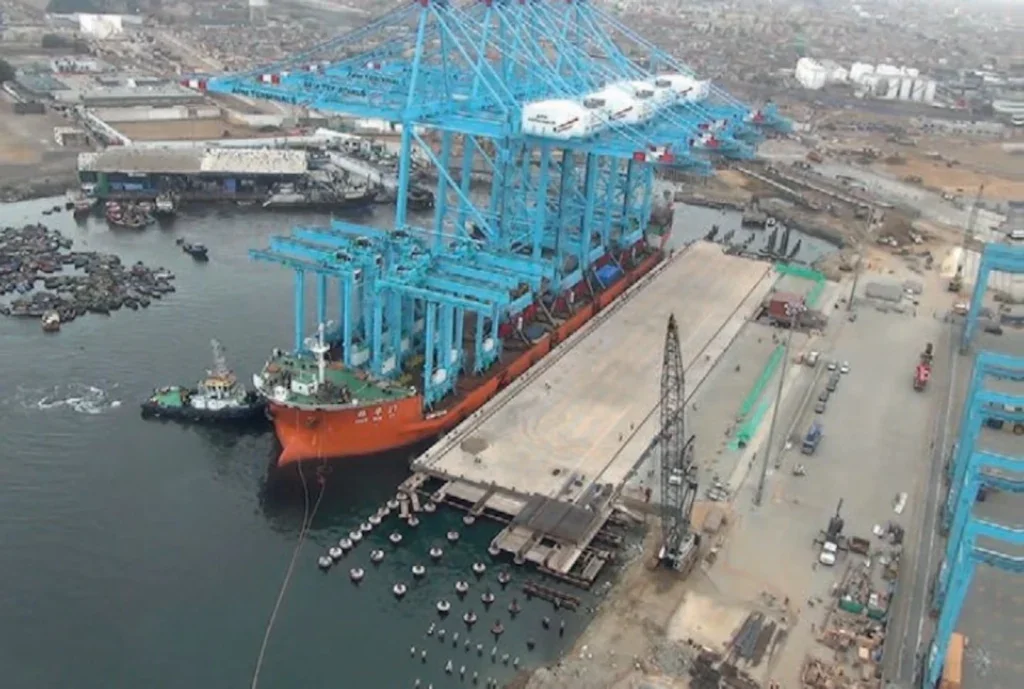
INFORM has a suite of six industry proven optimisation modules designed to improve operational efficiency reducing operational costs and allowing for improved revenues. They include: Crane Optimizer (CO), Yard Optimizer (YO), Vehicle Optimizer (VO), Train Load Optimizer (TLO), Rail Scheduler (RS), and Machine Learning (ML) modules.
“INFORM’s Syncrotess Optimization Plus solution is helping revolutionise our operations at Norfolk Southern’s Austell and Rossville terminals, providing us with unparalleled visibility and efficiency in our stacked operations, yard storage, and crane movements,” said Will Deshazor, Norfolk Southern Group VP Intermodal Automotive Terminal Operations. “Our rollout in Austell marks another step forward in our commitment to delivering exceptional service to our customers while optimizing our terminal operations.”
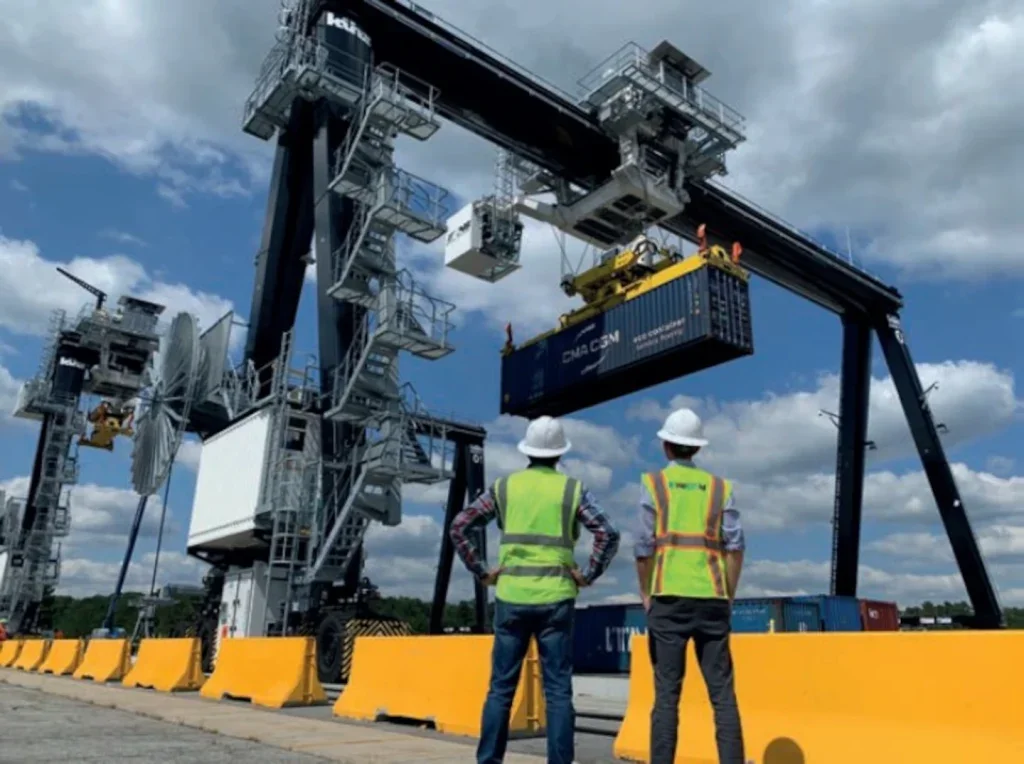
Matthew Wittemeier, director, marketing & sales, INFORM Terminal & Distribution Center Logistics Division said: “No doubt, it’s been a journey to get the Austell terminal up and running but we’re excited to be in a position now to demonstrate our world class optimisation solutions working in live operations.”
Dr. Eva Savelsberg, senior VP, INFORM’s Terminal & Distribution Center Logistics Division added: “I’m tremendously proud of INFORM’s team and their commitment to the Norfolk Southern project. It is great to have the second Norfolk Southern site go-live; it is a strong demonstration of our continued partnership with NS.”
KONECRANES
Konecranes has launched its flagship Konecranes X-series industrial crane, the successor to its CXT model with a new compact design, safe, and with wireless upgrade capabilities that can adapt to customer needs now and in the future.
The company is taking orders for the crane and expects first deliveries to begin in Q4 2024 across Europe, Middle East and Africa, with deliveries in other regions to follow soon.
“The new flagship crane builds on a quarter-century of success for the CXT, which was launched in 2000 and to date has sold well over 100,000 units globally,” said Jussi Luokomaa, product manager, ISE EMEA, Konecranes. “We expect to see good demand for the Konecranes X-series across multiple industries including general manufacturing, making it a core product for the company for years to come.”
Konecranes X-series adaptability is enabled by smart, connected components, allowing seamless software upgrades “over the air”— it what it claims is ‘a first in the standard crane industry’.
Customers have the option to initially purchase the crane and upgrade to additional Smart Features, enabling incorporation of functionalities as business needs evolve. Additionally, troubleshooting and software updates can be conducted from floor level, minimizing potential downtime.

With a focus on user-friendly design, the crane features an ergonomic Canman radio with integrated display, and Truconnect Remote Monitoring, providing insights into crane usage and operation.
The X-series shows how Konecranes is shaping next generation material handling for a smarter, safer and better world. Through sustainable design and material choices, such as a more compact and efficient motor and synthetic rope, the X-series drives efficiency improvements. Features like a thrust rocker reduce steel consumption, and an optimized belt drive reduces wear, minimizing the overall environmental impact.
Additionally, the implementation of inverter lifting technology ensures precise motor speed control, minimizing energy waste.
CHINA
Smart port construction, which incorporates technologies such as 5G, AI, autonomous driving, and cloud computing, has completely transformed Tianjin Port. The port now stands as the world’s first intelligent zero-carbon terminal.
The smart terminal increases the operating efficiency of a single gantry crane by more than 40% and reduces labor costs by 60%.
In recent years, China has been vigorously developing smart transport and logistics as it pushes to build world-class smart and green ports.
In addition to Tianjin Port, Ningbo- Zhoushan Port, the world’s busiest port in terms of cargo throughput, has also ridden the wave of intelligent port construction.
“About 90% of China’s foreign trade is shipped by sea. The development of smart ports will enhance operational efficiency and significantly contribute to the growth of China’s foreign trade,” said Lin Yikun, an official from the China Communications and Transportation Association.

As the world’s largest trader of goods, China’s foreign trade reached a new high in the first half of this year, providing more momentum for economic recovery, official data showed Friday.
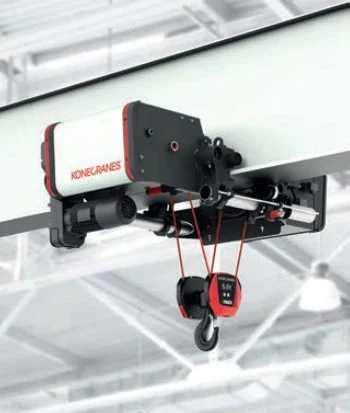
The trade volume of goods expanded 6.1% year on year to 21.17 trillion yuan (about 2.97 trillion U.S. dollars) in the January- June period, according to the General Administration of Customs.
“Maritime shipping is crucial to the world economy as 85% of all global trade is seaborne, and China plays an important role in this,” said Steve Gordon, global head of Clarkson Research Services, a shipping research institution, during Tianjin International Shipping Industry Expo 2024. “China remains shipping’s biggest single market. In many areas of the maritime economy, China is incredibly important and has taken on market-leading positions globally.”
The transformation of ports across the country also offers a glimpse into the vibrancy of China’s shipping industry. Official data shows the tonnage of the ship fleet owned by Chinese shipowners has reached 249.2 million gross tons, making it the world’s largest shipowner country in terms of gross tonnage.
Moreover, China has eight of the world’s top 10 busiest ports in terms of cargo throughput and seven of the world’s top 10 ports in terms of container throughput.
“In recent years, global shipping industry has encountered unprecedented challenges. The COVID-19 pandemic tested the fabric of the global supply chain, causing widespread disruptions,” said Joseph Edward Kramek, president, World Shipping Council. “Red Sea threats and disruptions in the Panama Canal have added complexity to our operations, yet these events have also driven us to develop more robust and flexible solutions.”
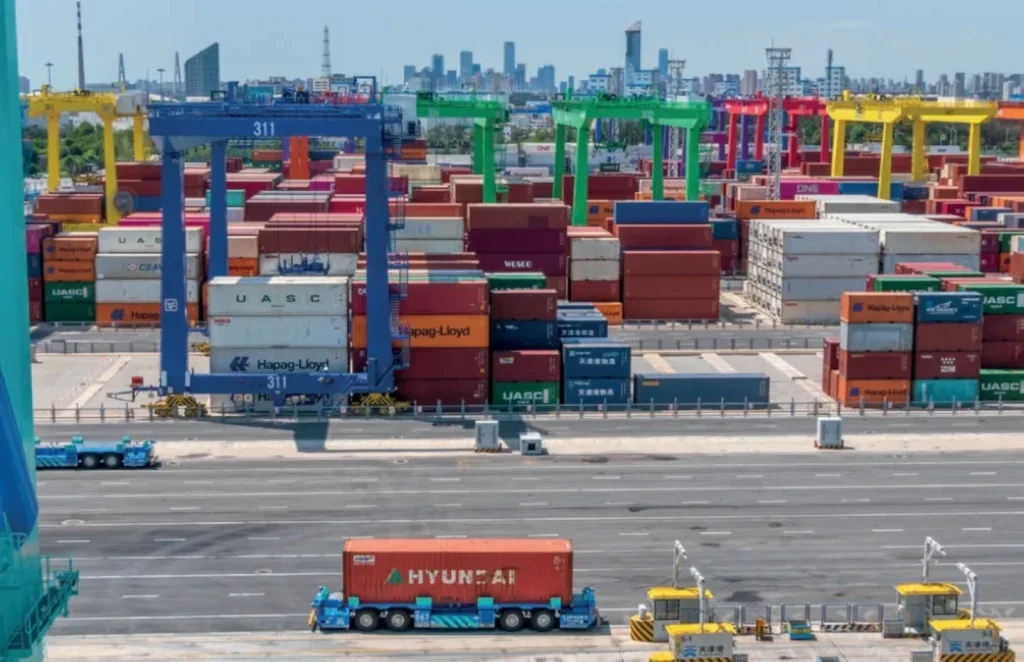
Through technological innovation, enhanced transportation efficiency, and increased global cooperation, China’s shipping industry has played a vital role in ensuring the security, stability and smooth flow of the international logistics supply chain and promoting global economic growth amidst uncertainty.
“China’s shipping industry is changing very fast and embracing the new technologies related to decarbonization and digitalization. That’s really impressive,” Jan Van der Borght, port representative, Antwerp-Bruges Port Authority, told Xinhua.
Additionally, Chinese shipping and logistics enterprises are also actively promoting cross-border cooperation.
Cainiao, China’s e-commerce heavyweight Alibaba’s logistics arm, has established a global smart logistics network with end-to-end capabilities. It operates across some 200 countries and regions.
“The global economy relies on the seamless movement of goods across oceans, and it is our responsibility to ensure that this continues efficiently and sustainably,” added Kramek.
“We like to work together with our Chinese friends and partners to exchange ideas. Cooperation, transparency and continuous dialogue are of paramount importance if we are to face the current challenges together,” said Van der Borght.


